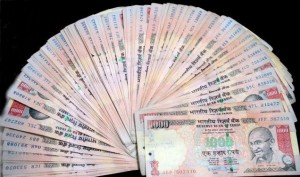Mid Year Economic Analysis is a document that gives an indication of where things stand in the midst of a financial year on different indicators of the economy. The following are some of the important points of MYEA 2014-15.
Macro-economy along with mood of the investors
Macro-economy of India has changed dramatically in the last few months, and so has the sentiment of the investors. There has been a reduction in inflation coupled with a corresponding decrease in fiscal deficit (current account). Inflow of capital has been increasing and the valuation of stock markets has been going up. Growth that was actually decelerating in the last few years has finally come out of a slumber and the world has started to sit up and take a fresh look at the initiatives of the new government. The change is palpable with the change in guard at the helm of affairs as the new government is not bound with the shackles of demands of coalition partners. This is why people expect this government to move ahead on economic front with a decisive and swift manner.
As if taking the cue, the new government has embarked upon a series of programs and policies that include deregulation of diesel prices, increasing the natural gas prices, linking cooking gas with bank accounts, dampening inflation in commodities related to agriculture, encouraging more FDI by removing caps in certain areas such as defense and opening up railways, moving in the direction of deregulation, and increasing the pace of financial inclusion. These initiatives by the government have coincided with a declining price of crude oil at the international level to boost the condition of Indian economy at the macro level. All this has helped in allaying the fears and doubts in the minds of business men and the investors around the country.
Situation at the fiscal front
Government has made its intentions very clear that it intends to reduce the fiscal deficit. This is reflected in the Mid Year Economic Analysis though there are challenges in front of the government that are as following.
- Growth in revenue collection has been slow because of slow growth of economy
- Revenue projections that were estimated are not materializing
- Expenditures in the past are proving to be a burden
- The fiscal deficit reduction targets are too ambitious especially when India is experiencing a slowdown of economy
Inflation
Results are good at the front of inflation because of several reasons. Corrective actions from government and the RBI, falling prices of agricultural products, falling crude prices, and slow growth of economy have favored decline in inflation. These forces that are both global as well as domestic have had a great effect on inflation and it is estimated that this downward trend in inflation may continue for some time to come.
Situation of exchange rate
It is clear to everyone that Rupee is having a free fall against the US dollar. But US dollar is also strengthening against other major currencies of the world. However, Rupee has appreciated against other currencies, which is a heartening trend. If India’s exports have lost their competitive edge, it is because of this depreciation of Rupee against the US dollar and also because of a surge in inflow of capital from other countries.
Challenge of growth
Deceleration in growth that was continuing for many years has now stopped. Dual forces of growth and improved investments are at work at present though there remains uncertainty about investments from the private sector. This is because of corporate sector is relatively weaker and boasts of high debts and small or negative profits. This is also because infrastructure model called PPP is in a state of limbo. This is a condition has become a characteristic of Indian companies and referred to as balance sheet syndrome.
It is strongly felt that to take growth forward and upward, it is necessary to pump in public funds in addition to participation of private investments. It has also become imperative to finance projects that are essential rather than wasting money on useless projects.
Future of reforms
People are excited and hoping for a revival in growth of economy not only because of the initiatives of the government such as Goods and Services Tax introduction and introduction of direct transfers. It is fervently hoped that GST will help in increasing collection of revenues and also reduce corruption that is prevalent in indirect tax collection. GST will pave the way for a climate of investment that will provide a level playing field to the investors as it will remove hurdles in trade. Linking of Aadhaar with bank accounts will ensure that subsidies and other welfare benefits reach the end users and middlemen will have no role or scope to intervene.
However, it is a must that initiatives and programs stated by the central government are complimented and introduced at state level also. This will ultimately lead to a situation where India could become a role model in terms of a cooperative and competitive federal structure. In conclusion, it can be said that there is great hope for the revival of growth of Indian economy and no room for complacency at this critical moment of the reform process.
About Sanjay Tandon
Sanjay Tandon is a graduate engineer from IIT Varanasi. He has been writing as a freelancer for many years. He loves to write on various niches. He is passionate about politics and economy and spends his free time watching news channels. He is also an expert on relationships.




















